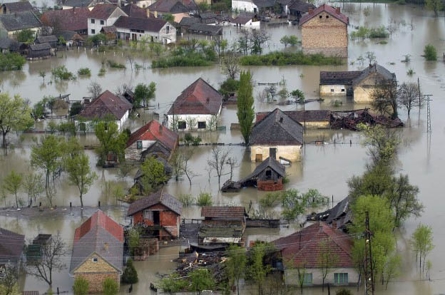
Whether it's a wildfire in California, tornadoes in the Midwest or hurricanes along the Gulf Coast, natural disasters strike with alarming frequency. While we can't always prevent natural disasters, it is possible to rebuild, especially when we come together as a community. Learn how you can get involved with your neighborhood after the unexpected happens with these tips from the experts at ServiceMaster Restore®.
Volunteer in the CERT program
The Community Emergency Response Team (CERT) was created by the Federal Emergency Management Agency (FEMA) to teach volunteers how to prepare for, respond to and recover from disasters. With thorough training and education that includes hands-on practice and realistic exercises, more than 600,000 trained CERT volunteers have been able to support their communities in both emergency and non-emergency situations since the national program began.
Typically, CERT courses are taught by first responders and other qualified volunteers. Some of the courses you may learn during CERT training include the following:
- How to prepare for a disaster
- How to suppress a fire
- How to perform basic medical operations
- How to conduct light search and rescue operations
- How to identify common psychological signs and symptoms experienced by disaster victims and workers
While CERT courses are standardized nationwide, local and state program managers can modify their programs to best suit their own communities. To learn how you can register or to find a program near you, contact FEMA or your local emergency manager.
Participate in a CASPER
The Community Assessment for Public Health Emergency Response (CASPER) was started by the Centers for Disease Control and Prevention (CDC) with two primary goals: to quickly obtain information about the needs of an affected community and to monitor the changes of needs during recovery. CASPERs are conducted through face-to-face interviews with personnel from any local, state, regional or federal office to help officials organize an emergency response and provide service to the households in need of the most immediate attention. They can also be conducted after emergency response teams have been sent out to determine ongoing community needs, allowing areas to get additional support as needed.
Like CERT, CASPER can be used in both disaster and non-disaster settings. They can be used to assess future emergency response preparedness, estimate the needs of communities and assess public health perceptions, among other situations.
If you represent a state, regional or local health department and would like CASPER training, contact the CDC. They also offer a CASPER online learning tool to educate personnel on its methodology, uses and capabilities required to conduct a thorough CASPER.
Volunteer with the American Red Cross
One of the most effective ways of responding to the immediate needs of your community after a disaster strikes is by volunteering with the American Red Cross. Volunteers make up 90 percent of their workforce, proudly responding to nearly 64,000 disasters every year. Some volunteer opportunities through the American Red Cross include the following:
- Volunteer management
- Disaster services
- Disaster preparedness presenter
For more information about how to volunteer and what volunteer opportunities are available in your area, search openings on the American Red Cross website.
At the end of the day, we're all just neighbors helping neighbors. At ServiceMaster Restore, we're proud to help our communities weather the storm, rebuild and get back to normal. If the unexpected does happen, our weather damage recovery services quickly get your businesses, homes and lives back to pre-loss conditions as quickly as possible. Available 24/7 every day of the year, we're happy to be by your side every step of the way.
